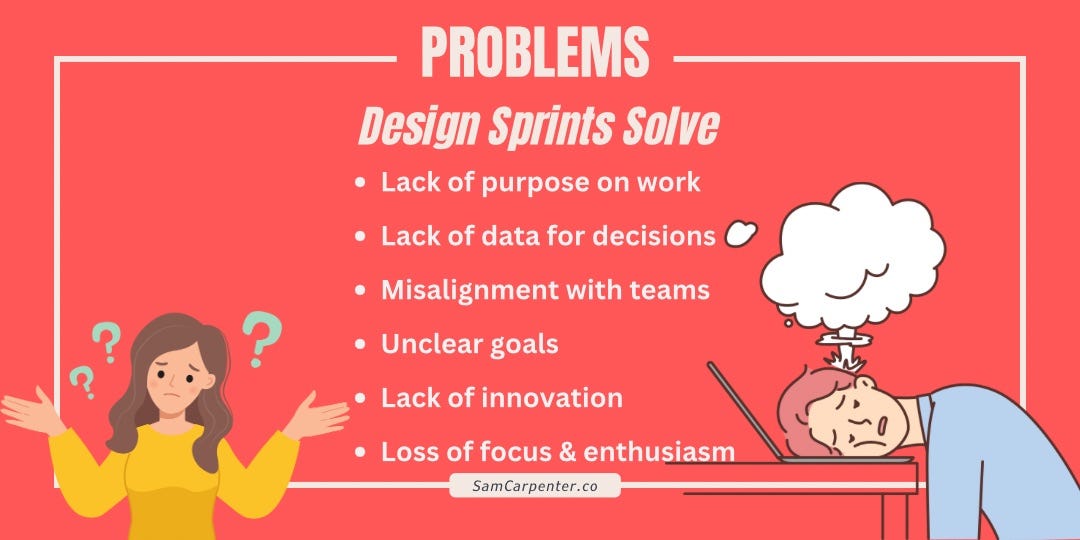Day 0: Design Sprint How-To Guide
4 days that rapidly validate design and development ideas to solve big problems.
Are you ready to go from doing good work, and power up to doing GREAT work? It could be time to take a step back from the day-to-day way of working and dedicate 4 days of collaboration to get greater clarity, certainty and define what to work on next.
Running a design sprint means you don’t have to build the tech first to see if your next big idea will work!
In this blog I introduce Design Sprints, and hopefully present a compelling reason to run them. This article outlines the what and the way, and my following 4 How-to Design Sprint blogs will outline how to run them. As my image below shows, this design sprint runs over 4 days, the following 4 blogs outline in detail the activity for each of those 4 days of a design sprint so anyone can facilitate them with confidence.
This image shows the headlines of each of those four days.
This image lists the problems design sprints solve.
Purpose and Focus:
If you go on to follow these blogs you will understand the structured process aimed at solving complex problems and exploring potential solutions in a design sprint. You’ll learn who typically is included in the small sprint team that work intensively over 4 days, to develop and prototype ideas. I will show you how to focus on user-centered design, validate assumptions, and create a tangible prototype.
Duration:
My process is over 4 days. It follows a specific structure with designated activities for each day, including problem definition, ideation, prototyping, and testing.
Team Composition:
I will outline who could make up the design sprint team depending on if you’re working in a small start-up or a large enterprise. Typically a small cross-functional team consists of professionals from various disciplines, such as designers, developers, marketers, and subject matter experts. The team collaborates closely throughout the sprint to generate ideas, make decisions, and create prototypes.
Approach:
I will show you the structured approach that incorporates various design thinking techniques to uncover insights, generate ideas, and rapidly prototype solutions. The process emphasises user research, ideation, rapid iteration, and user testing to validate assumptions.
Outcome:
The main outcome of a design sprint is a tangible prototype or a set of prototypes that have been tested and validated with users. The prototypes serve as a basis for further iterations and development.
Next:
Follow my How-To Design Sprint 4-Day Series published on Monday through to Thursday, all this will be simply explained in an easy to follow step-by-step guide, conveniently sent to your inbox. I am passionate about empowering others to do good in the world. I really hope you find my blogs valuable.
If you want further support to either coach or train you in facilitating design sprints, please contact me (see “4 links” in my profile).


